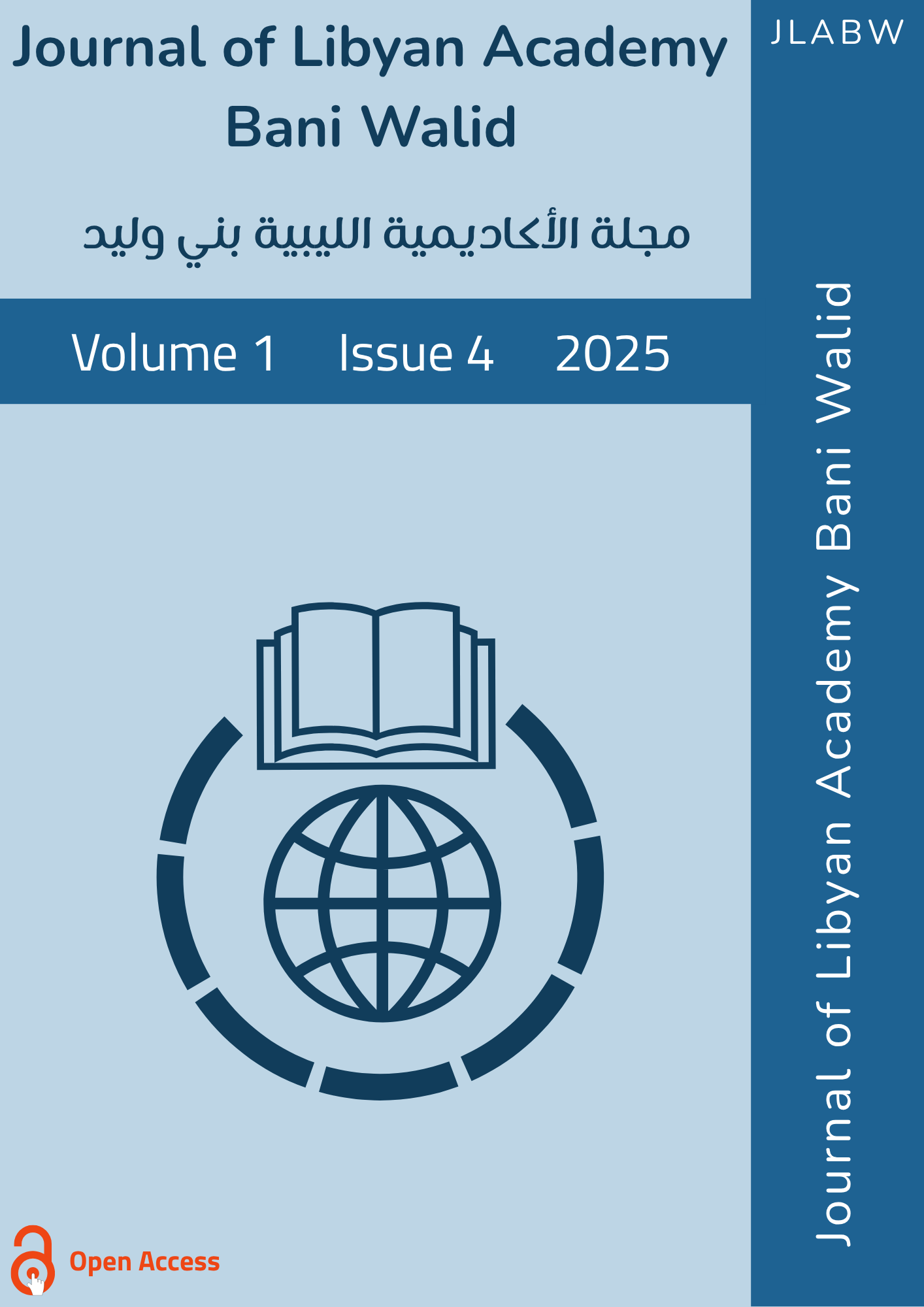Observational Study of bacteria causes Nosocomial Infection in an intensive care unit in Al-Brega General Hospital
Keywords:
Intensive Care Unit, Nosocomial Infections, AntibacterialAbstract
This observational study aimed to identify the bacterial causes of nosocomial infections among patients admitted to the Intensive Care Unit (ICU) of Al-Brega General Hospital. A total of 500 patients admitted between August 2024 and January 2025 were monitored for the development of hospital-acquired infections. Clinical data were collected, and bacterial cultures were obtained from various clinical sites to determine the pathogens responsible for these infections.
The findings revealed that nosocomial infections occurred in 27% of ICU patients, with Staphylococcus aureus being the most prevalent pathogen (24.8%), followed by Escherichia coli (15.8%). Rifampin demonstrated the highest antibacterial efficacy, whereas 95.8% of the isolates showed resistance to commonly used antibiotics, underscoring a major therapeutic challenge in infection management.
These results emphasize the urgent need for robust infection control practices and the implementation of antibiotic stewardship programs within ICU settings to reduce infection rates. Furthermore, continuous surveillance of bacterial pathogens and antimicrobial resistance patterns is crucial to enhance patient outcomes and to inform evidence-based treatment strategies in critical care environments.
References
Jain Atul, Singh K. Recent Advances in the Management of Nosocomial Infections, Review article. JK Science, 2007:9:1.
Mehta A. Rosenthal VD, et al. Device-associated nosocomial infection rates in intensive care units of seven Indian cities. Journal of Hospital Infection (2007) 67, 168-174, www.sciencedirect.com
PRAKASH SK. Nosocomial infection an overview. In:Maulana Azad Medical College, New Delhi: 2001;6: 1-13.
HÄUBLER S. Sociomicrobiology: New approaches to understand chronic infectious diseases. Helmholtz Centre Infect Res 2007; 4: 301-305.
Girard R. Guide technique d'hygiène hospitalière. Alger, Institut de la Santé publique et Lyon, Fondation Marace Mérieux, 1990.
Rosenthal VD, Guzman S. Orellano PW. Nosocomial infections in medical-surgical intensive care units in Argentina: attributable motality and lenght of stay. Am J Infect Control 2003; 31(5):291-5.
WAHINGTON CW, ALLEN SD, JANDA WM, KONEMANEW, PROCOP GW. Koneman's color atlas and textbook of diagnostic microbiology. 6 ed: Lippincott Williams & Wilkins; 2006.
BROOKS GF, CARROLL KC, BUTEL JS, MORSE SA.Jawetz, Melnick, Adelberg's Medical microbiology.24 ed: McGraw-Hill Companies Inc; 2007.
CONTRERAS GA, DIAZ CA, CORTES L, REYES J, VANEGASS, PANESSO D, RINCÓN S, DÍAZ L, PRADA G, MURRAYBE, ARIAS CA. Nosocomial outbreak of Enterocco-cus gallinarum: untaming of rare species of ente-rococci. J Hosp Inf 2008; 70: 346-532.
MAROTHI YA, AGNIHOTRI H, DUBEY D. Enterococcalresistance-an overview. Indian J Med Microbiol2005; 23: 241-249.
GOULD M. Antibiotic policies to control hospital-ac-quired infection. J Antimicrob Chemother 2008;10: 100-115.
Bryan C S, Reynolds K L, Brenner E R. Analysis of 1,186 episodes of gram-negative bacteremia in non-university hospitals: the effects of antimicrobial therapy. Rev Infect Dis. 1983;5:629-638. PubMed





